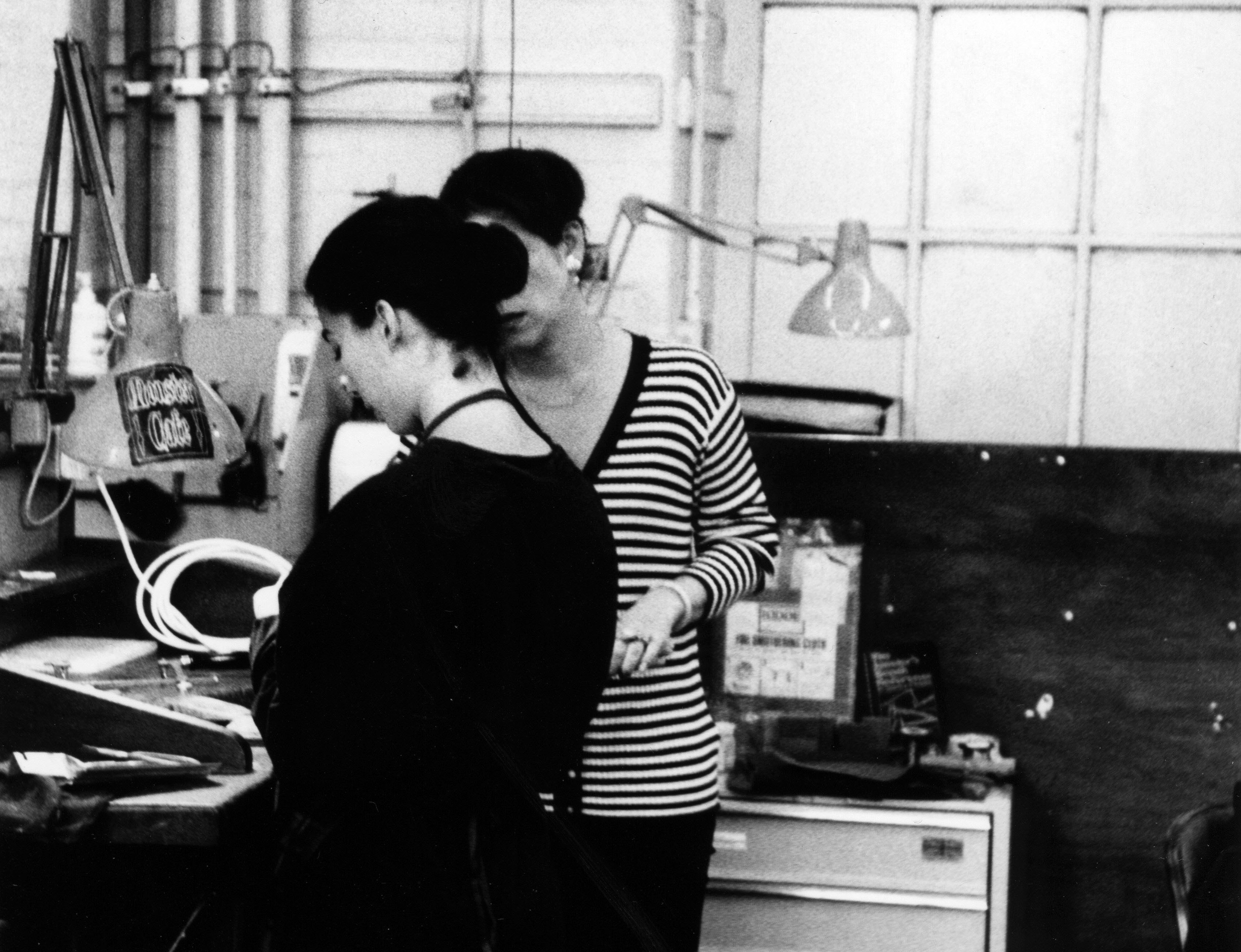In November 2018, the Central Saint Martins Product, Ceramic and Industrial Design programme hosted an evening of celebration and discussion on the role of women in product design. Here, Contextual Studies Leader Betti Marenko reports on the event and the urgency of addressing gender inequality in the design industry.
On 14 November 2018, female BA Product Design alumni and special guests came together at Central Saint Martins to share their stories, experiences, insights and the challenges encountered as women in the field of design. This covered their time as students and their roles in a professional capacity – working in a firm or freelance, in the industry and in education. 20 years ago, the BA Product Design course at Central Saint Martins launched a number of initiatives to attract more female students. These outreach initiatives were incredibly successful and today the student cohort have a 50-50 representation of female and male students. This is a terrific achievement that must be celebrated – and is also something now reflected in most design courses across Europe and North America.
There is plenty to celebrate. However, as the Design Council report 2018 indicates, the UK’s design workforce is mostly male (78%) – a figure which has not changed from the previous 2015 report. Most concerning, within the eight design sub-sectors included in this study, product and industrial design remain the most male dominated (95%) followed by digital design (85%) and architecture and built environment (80%). This is despite women making up over 60% of all students studying creative arts and design courses at university. So a question naturally arose during the event: Where do all these talented and brilliant female graduates go?
It seems significant to ask this right now. 2018 has been a pivotal year: vocal debates on gender inequality, the visibility and impact of the Me Too movement, rising awareness about gender fluidity and what constitutes gender itself. This year also marks the 100-year anniversary of the Representation of the People Act 1918, which was an important milestone in the women’s suffrage movement and gave women who met certain criteria the right to vote. 2018 feels like the right time to reflect on some of the progress made so far within the triangulation of design, education and industry. Even more so, to reflect on what can be done in the future to ensure gender equality and to ensure that these issues are given visible platforms for discussion.
The Speakers and Guests at Women into Product Design included:
Lorraine Gamman
Lorraine Gamman is Professor of Design at Central Saint Martins and Director of Design Against Crime Research Centre (DACR) which has won many awards for its work on socially responsive design. Gamman has written extensively – not only on design and social innovation but also on gender and representation. She also taught contextual studies for design at Central Saint Martins for over 25 years.
Jackie Piper
Jackie Piper is a designer and Co-Founder of British Colour Standard©. She has worked in the creative industries for several years for companies including Polaroid, Panasonic and Matteo Thun studio. She founded W2/Whitbread, producing contemporary collections for the home and gift market and sold globally from Heals to the Museum of Modern Art. She teaches on the BA Product Design course.
Jane Penty
Jane Penty is a designer, educator and author of the forthcoming book Product Design and Sustainability. After working at General Electric as an engineer, Penty was the first female graduate of the RCA Industrial Design Engineering course. She worked with London design consultancies before becoming involved in education and research. Having studied and worked almost exclusively in male-dominated environments, Penty set up the first Women into Product Design outreach initiatives in 1996. Today the landscape of product design and its gender balance has changed radically, at least in education, but there is still work to be done within and beyond its walls.
The speakers included a host of Central Saint Martins alumni from the past twenty years, including:
Afroditi Krassa, 1996
Afroditi Krassa is a Hospitality Designer and Founder of AfroditiKrassaa, an award-winning branding and interior design studio. Her company portfolio ranges spans bars, restaurants, hotels and cinemas. It includes some of the most significant hospitality projects of the past decade: itsu, Dishoom, Heston Blumenthal’s first airport restaurant The Perfectionist’s Café and the redesign of Curzon Cinemas.
Michiko Nitta, 2007
Nitta is part of collective Burton Nitta – an interdisciplinary art and design studio collaborating with those in the fields of science and technology to investigate our future world and human evolution. Burton Nitta’s work is published and exhibited internationally from MoMA, New York to the V&A Museum, London.
Roselle Lam, 2012
Lam is a Senior Creative Lead at Bow & Arrow. Her vast expertise encompasses product and packaging and graphic, experience and digital design across multiple industries. She works with creatives and strategists to create, develop and accelerate game-changing products and services for clients – including Google, Wall Street Journal, MINI, Method, Cadbury’s, Aviva, Zipcar and Carphone Warehouse.
Ella Dorfman, 2014
Dorfman is Service Designer for the National charity Citizens Advice where she applies the design process to a variety of social and organisational challenges. She has recently completed a Masters in Social and Cultural Anthropology at UCL. She has undertaken 3 months ethnographic fieldwork in Palermo, Sicily investigating anti-mafia social enterprise and the ethical challenges they face in trying to promote a ‘moral’ economy.
Kaye Toland, 2017
Kaye Toland is a designer and Co-Founder of Méahé Design. Her work has a strong focus on storytelling and narrative development in order to translate complex issues into narrative objects, installations and interactions. These objects can be speculative, critical or everyday.
More:

